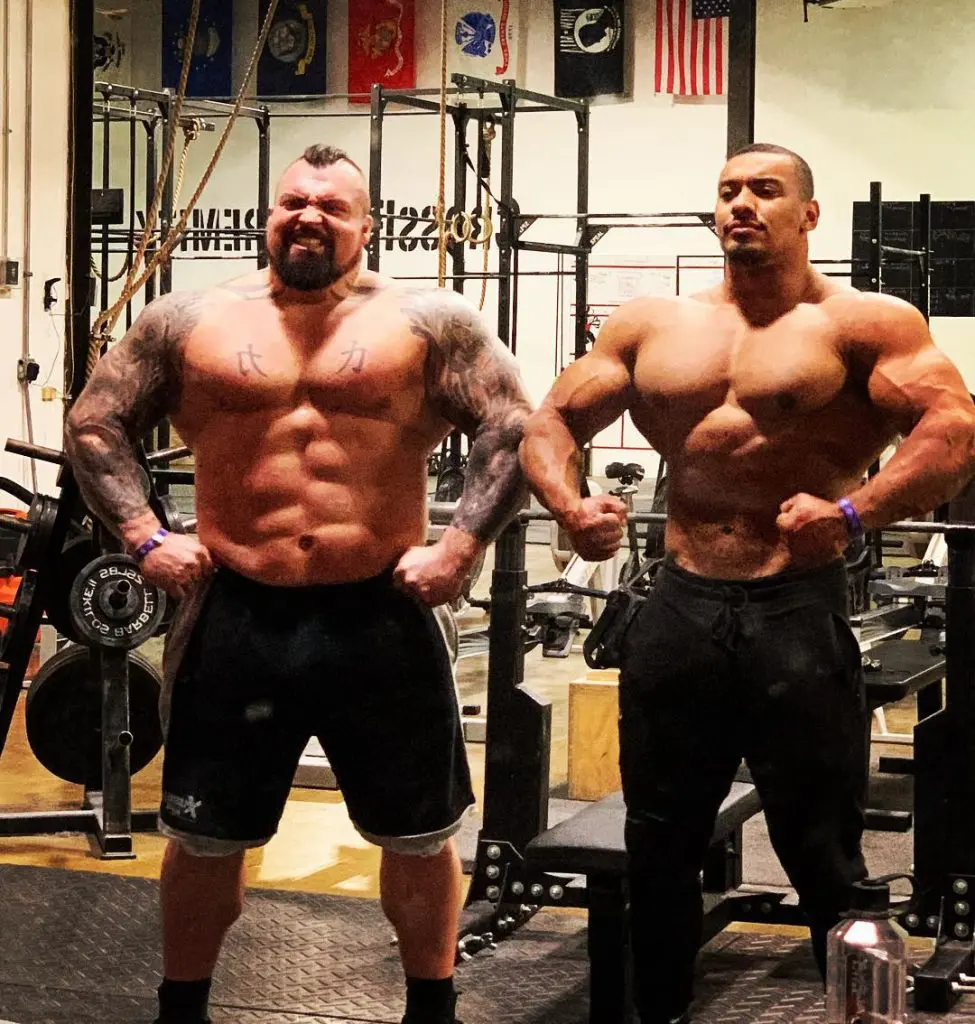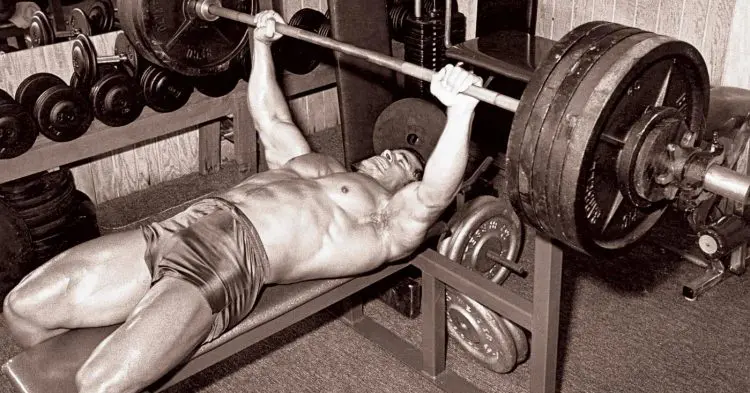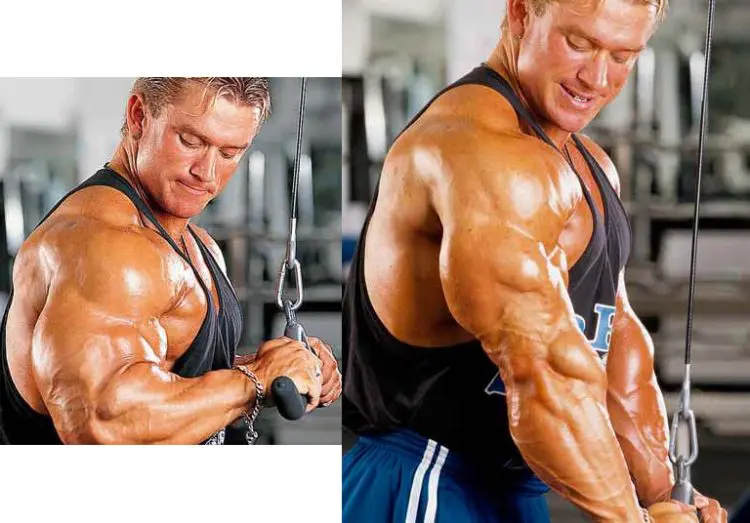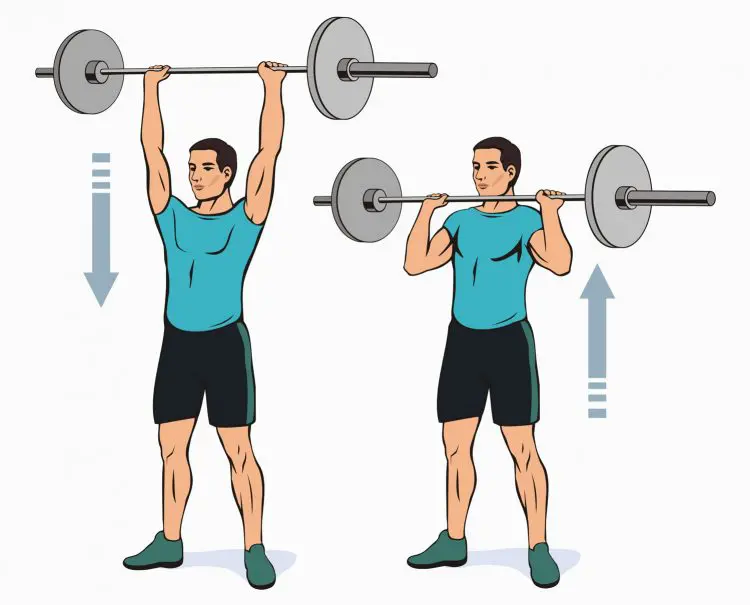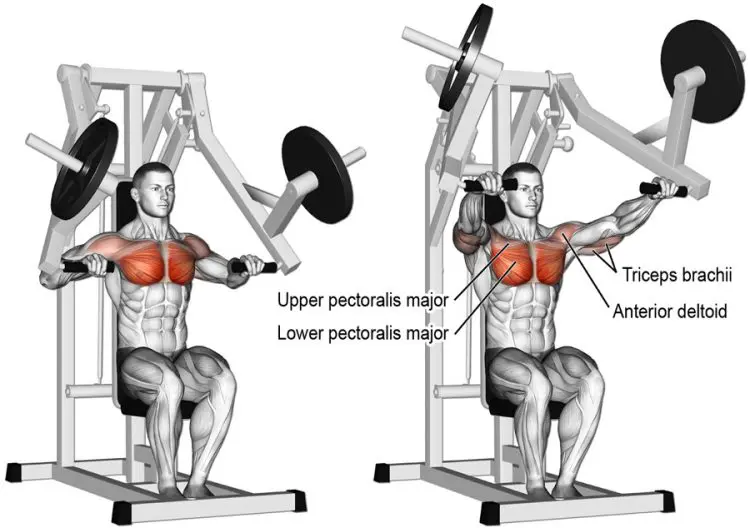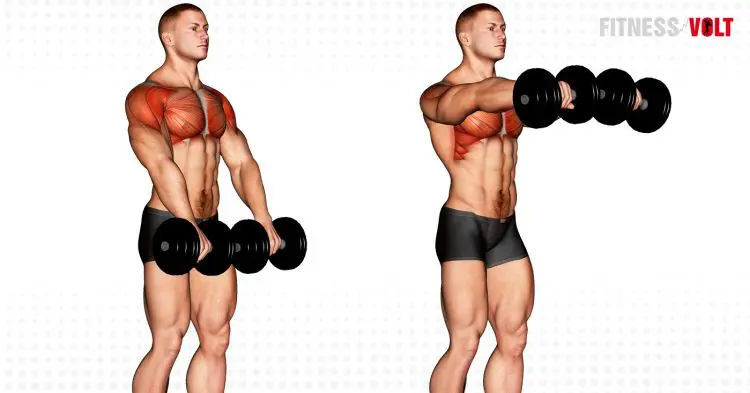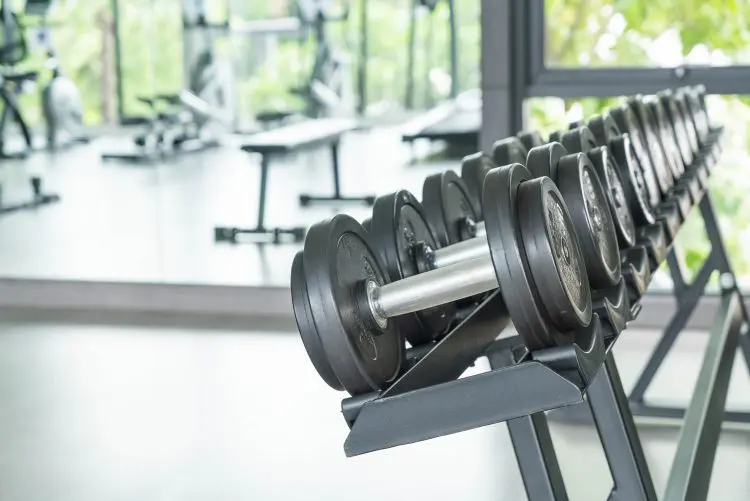Supersets are a type of training system. Training systems are recognized methods that you can use to make your workouts more demanding, productive, or time-efficient. Drop sets, reverse pyramids, forced reps and German Volume Training are just some of the training systems you can use to get more from your workouts.
However, of all the training systems you can use, supersets are arguably the most flexible and versatile. Using supersets, you can shave time off your workouts, increase time under tension to build muscle faster, or even shed fat to achieve a leaner, more athletic physique. Whatever your training goal is, supersets can help you reach it!
This article will explain why, when, and how to use supersets and provide you with examples of all the different variations of this superb training method.
What are supersets?
Usually, during a strength training workout, you do your set of repetitions, rest a moment, and then do another set. This is called the straight sets method. While straight sets work, they aren’t exactly time-efficient. For every set you do, you spend at least as much time resting. You might end up spending more time resting than you do training.
This all changes with supersets, where, instead of resting after each set, you rest between pairs of exercises, essentially halving the amount of time you need to spend recovering.
Level Up Your Fitness: Join our 💪 strong community in Fitness Volt Newsletter. Get daily inspiration, expert-backed workouts, nutrition tips, the latest in strength sports, and the support you need to reach your goals. Subscribe for free!
(is this referring to rest times? if so, does this mean the rest times in between each superset is shorter than it is with a straight set)
It’s referring to the previous sentence: As in “You might end up spending more time resting than you do training. This all changes with supersets.” After all, you only rest after the second exercise, and not after the first and second. This effectively halves your amount of rest. Rest periods are dictated by the training goal, not the fact you’re doing supersets. I’ve added an extra note to clarify.
With supersets, you do two exercises back-to-back. In other words, on completion of one movement, you move quickly to another exercise and do a set of that one too. Then, after finishing your second exercise, you take a rest and then repeat the pairing.
In most training programs, you’ll see supersets listed as a) and b) exercises. When you see this designation, you know you should do the exercises back to back. For example:
1a. Push-ups
1b. Pull-ups
This means you do the push-ups, and then immediately do a set of pull-ups. Subsequent pairings would be listed as 2a and 2b, 3a and 3b, etc.
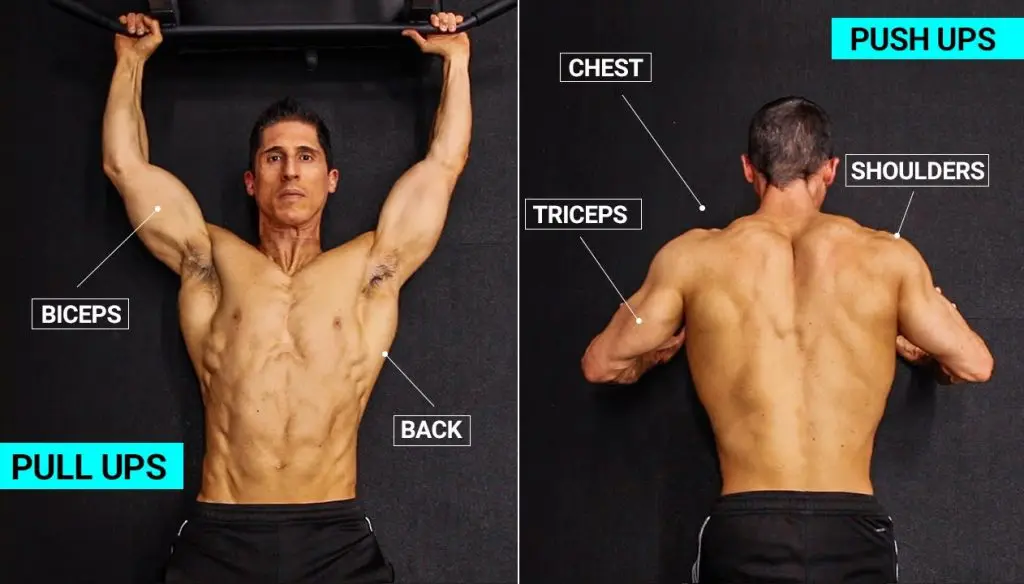
In most instances, you move as quickly as you can from one exercise to the next. This may mean you need to set up exercise stations next to each other or choose exercises you can do with the same equipment, e.g., dumbbell overhead presses and dumbbell biceps curls.
10 Different Supersetting Methods
There are various types of supersets you can do, and each one has a different methodology and purpose. The trick is using the right method for your goals. In this section, we’re going to outline each variation and explain its benefits so that you can choose the best one for your workouts.
1. Agonist supersets
Agonist supersets involve doing two exercises for the same muscle group. This increases time under tension and workout volume, both of which are useful for hypertrophy or muscle building. Agonist supersets also cause a dramatic pump effect, which is another factor that can increase muscle growth. You can use this type of superset to increase local muscular endurance too.
To perform an agonist superset, choose two exercises for the muscle group you want to train. Do your first exercise, and on completion, immediately do the second exercise. Rest for the prescribed time, and then repeat the pairing.
You can pair compound exercises, isolation exercises, or one of each as preferred. Learn the difference between compound and isolation exercises in this guide.
Examples of agonistic supersets include:
1a. Lunges
1b. Squats
Or:
1a. Barbell curls
1b. Dumbbell curls
Or:
1a. Bench press
1b. Push-ups
Because you’ll start the second exercise already feeling fatigued, you should reduce the load; otherwise, you won’t be able to complete many reps. You may also find that lingering fatigue means you can’t use as much weight as usual for the first exercise of each pairing either. Adjust your weights until you know how your body responds to this type of training.
2. Agonist-antagonist supersets
Agonist-antagonist supersets are also known as push-pull supersets. With this method, you pair exercises that work opposing muscle groups, such as your biceps and triceps or quadriceps and hamstrings.
As well as saving time, this method may also speed up recovery.
Muscles are arranged in pairs across joints. When one muscle contracts, the opposing muscle must relax. This is called reciprocal inhibition. When you train one muscle, the one that opposes it relaxes, which increases blood flow to enhance recovery.
To add agonist-antagonist supersets to your workouts, pair two exercises for opposing muscle groups. Do your first exercise, and on completion, immediately do the second exercise. Rest for the prescribed time, and then repeat the pairing.
Examples of agonist-antagonist supersets include:
1a. Leg Extensions
1b. Leg curls
Or:
1a. Overhead press
1b. Pull-ups
Or:
1a. Bench press
1b. Bent over row
This method works well with exercises where the agonists and antagonists are easy to identify. It’s not so useful for movements like squats and deadlifts where there are lots of large muscles working together at the same time.
For example, in squats, the quads, hamstrings, and glutes are all working together. It’s much harder to identify opposing muscles for your second exercise. Keep things simple by using agonist-antagonist supersets with exercises with just one obvious prime mover and a clearly identifiable opposite muscle.
3. Agonist-opposing synergist supersets
This superset method is perfect for those days when you don’t have much time to train but still want a comprehensive workout. If you train your chest and biceps, or back and triceps, this is the superset for you!
With agonist-opposing synergist supersets, you choose an exercise for the primary muscle you want to train, and then another exercise for the muscle that opposes the synergist. Synergist muscles are “helper” muscles.
Examples of agonist-opposing synergist supersets include:
1a. Bench press
1b. Dumbbell curls
Or:
1a. Lat pulldowns
1b. Triceps pushdowns
Or:
1a. Dumbbell shoulder press
1b. Concentration curls
As with the previous supersetting methods, do the first exercise and then, without resting, move onto the second exercise. Rest for the prescribed period before repeating the pairing.
4. Lower body/upper body supersets
This self-explanatory superset method is useful during whole-body workouts, and when fat loss is your main training goal. As well as saving time, lower body-upper body supersets will raise your heart and breathing rate, increasing the metabolic demand of your workout.
Examples of lower body-upper body supersets include:
1a. Squats
1b. Push-ups
Or:
1a. Deadlifts
1b. Overhead presses
Or:
1a. Leg press
1b. Bent-over rows
5. Pre-exhaust supersets
Pre-exhaust supersets are a variation of agonist supersets as you’ll be doing two exercises for the same muscle group. However, with this method, your first exercise is an isolation movement, and the second exercise is a compound movement.
Examples of pre-exhaust supersets include:
1a. Dumbbell flies
1b. Chest press machine
Or:
1a. Leg extensions
1b. Leg press
Or:
1a. Dumbbell lateral raises
1b. Overhead presses
Like regular agonist supersets, this method is useful for hypertrophy and endurance training, and you’ll get a good pump too. However, you should be aware that you won’t be able to use as much weight as usual for the second exercise, so that that into account when choosing your loads.
6. Post-exhaust supersets
Post-exhaust supersets are basically the opposite of pre-exhaust. After completing your compound exercise, you do an isolation exercise for the same muscle group. This increases time under tension and should produce a significant pump.
You should also find that you can handle a little more weight with the compound exercise, making this method better for strength. You should endeavor to move quickly between exercises because the second exercise won’t be as productive if you recover too much.
Examples of post-exhaust include:
Level Up Your Fitness: Join our 💪 strong community in Fitness Volt Newsletter. Get daily inspiration, expert-backed workouts, nutrition tips, the latest in strength sports, and the support you need to reach your goals. Subscribe for free!
1a. Dumbbell bench press
1b. Cable crossovers
Or:
1a. Shoulder press machine
1b. Front raises
Or:
1a. Squats
1b. Leg extensions
7. Agonist-distant agonist supersets
With this method, you do your main agonist exercise as usual and then do a second exercise for a completely different muscle group to make better use of your rest time. Typically, this second exercise is far away from the first, giving this supersetting method its name.
You can choose almost any combination of exercises, so long as the performance of one exercise will have no impact on your performance of the other.
Agonist-distant agonist supersets examples include:
1a. Chin-ups
1b. Calf raises
Or:
1a. Bench press
1b. Leg extensions
Or:
1a. Barbell curls
1b. Crunches
8. Strength and power supersets
Strength and power supersets pair a heavy compound exercise with a more explosive power exercise. This method increases strength and power at the same time, which are typically trained separately.
After the heavy set of strength training, the following power exercise should feel much easier. The heavy weight increases muscle fiber and nervous system activation. Similarly, the power exercise has a similar performance-boosting effect so, when you go back to your strength exercise, you’ll probably be able to lift more weight or do more reps.
Examples of strength and power supersets include:
1a. Deadlifts
1b. Power cleans
Or:
1a. Squats
1b. Box jumps
Or:
1a. Bench press
1b. Plyo push-ups
While you can go straight from the strength exercise to the power exercise, taking a moment or two between exercises will allow you to lift more weight and get better results. However, short rests can work too but will mean using lighter loads.
9. Lazy supersets
While this isn’t an “official” supersetting method, it’s one I’ve used to great effect during powerlifting training. When you are training for strength, invariably, you end up resting 3-5 minutes between sets. This is a LONG time and means you spend way more time resting than training. You can even get cold or bored waiting between sets.
With lazy supersets, you do your main strength exercise, rest a minute or so, and then do a secondary exercise. I often paired pull-ups with squats when I was “greasing the groove” and trying to get my pull-up numbers up.
By the time you finish your second exercise and rest a further minute or so, you should be ready for another set of your main strength exercise. You could also use this method for doing pre and rehab, or even mobility training.
You could also start warming up for your next exercise during your breaks so that you can jump straight into the next part of your workout with minimal delay.
Long breaks between heavy strength exercises are unavoidable, but that doesn’t mean you can’t make better use of this downtime. Use lazy supersets to avoid wasting this valuable time. Think of the second exercise as a form of active recovery when strength training recovery periods are usually passive.
Examples of lazy supersets include:
1a. Bench presses
1b. Band pull-aparts
Or:
1a. Squats
1a: Pull-ups
Or:
1a. Deadlifts
1b. Push-ups
10. Strength and cardio supersets
This final supersetting method will help you burn fat and improve your cardiovascular fitness. Instead of sitting and waiting for your recovery time to pass, you do a short burst of cardio instead. This will increase your heart and breathing rate and also burn more calories per workout. But, because you’ll be using an entirely different energy system and set of muscles, you’ll still recover between sets of strength training.
Examples of strength and cardio supersets include:
1a. Lunges
1b. Jump rope
Or:
1a. Bench press
1b. Stationary bike
Or:
1a. Pull-ups
1b. Burpees
You don’t need to do cardio for the entire duration of your rest period. For example, if you usually rest 90-seconds between sets, just do 45-60 seconds. This extra time will save you from having to rush.
Spread across your entire workout, this method can add up to a whole lot of extra cardio. If you do 20 sets of strength training per workout, you could accumulate as much as 20 minutes of cardio without making your workout any longer. This can have a significant impact on fat burning and fitness.
What Weights Should You Use For Supersets?
One of the things that make supersets so great is that you can use them to achieve almost any training goal. Simply apply the correct training parameters to your workouts, and you’ll make the progress you want.
Typically, your reps and weights should fit into the following ranges:
- Strength/power – 1 to 5 reps with 85%+ of your 1RM
- Hypertrophy – 6 to 12 reps with 67-85% of your 1RM
- Endurance – 13 to 20 reps with 50-67% of your 1RM
That doesn’t mean you have to use the same rep count for both of the exercises in your superset pairs. For example, when doing post-exhaust or agonist supersets, you could choose to use heavier weights and lower reps for your first exercise and then lighter weights and higher reps for the second.
Like so many things in bodybuilding and strength training, there are no hard and fast rules, but only guidelines that are open to interpretation. Feel free to experiment and modify these ten different supersetting methods to suit your needs and goals.
When to Use Supersets?
Supersets are such a versatile, flexible training method that you can use them all the time if you wish. While some types of supersets increase workout intensity and should be used more sparingly, others do nothing for workout intensity and just help you save time.
Subsequently, you can use some form of supersets in almost every workout you do.
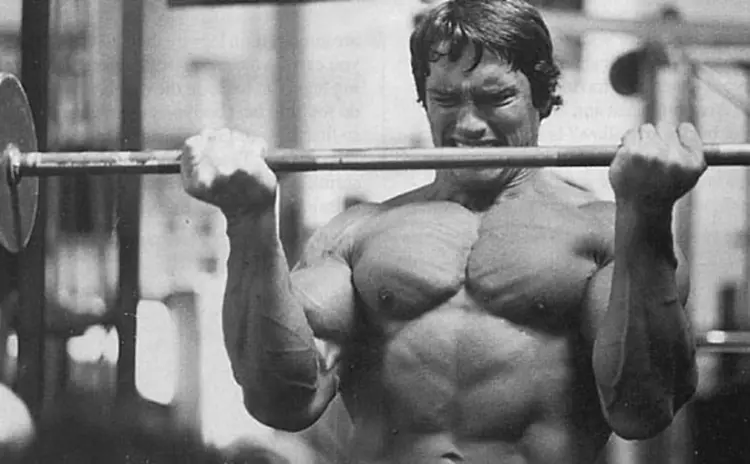
However, for the sake of variety and to avoid workout boredom and plateaus, you should use different supersetting methods rather than picking one and using it all the time. We’ve provided you with ten, so you could use one per month for the next ten months before starting over. Whichever one you use, your workouts will be more time-efficient and potentially more productive too.
Superset Drawbacks
Whatever your training goal is, supersets could help you get there faster. But that doesn’t mean they aren’t without drawbacks and disadvantages. Consider the following before you dive headfirst into supersets:
1. Monopolizing workout equipment
While this drawback is a non-issue if you train in a home or garage gym, supersets could make you very unpopular in a commercial gym if you don’t think about your fellow gym users.
For supersets to work, you’ll need to monopolize two pieces of training equipment, and, in a crowded gym, this could upset other users. You may even return to your second exercise only to find someone else is using it, and your superset workout starts to fall apart.
Avoid this problem by pairing a band or bodyweight exercise with a free-weight or machine exercise. That way, you won’t stop anyone else from doing their workout.
2. Overtraining
Supersets allow you to cram a lot more training volume into less time. While that’s an obvious advantage, especially when you are in a hurry, it could be a disadvantage too. In theory, you could do twice the volume in the same training session, putting a lot more stress on your muscles and your ability to recover between workouts.
Take care to consider your rest and recovery needs when you start using supersets, especially if you use them to increase training volume rather than make your workouts shorter.
3. Lower training weights
Some supersetting methods will reduce the amount of weight you can lift. That’s not too much of an issue when you are training for endurance or even hypertrophy, as workout intensity will still be higher. But, if you are training for strength, a reduction in weight could make your workouts less effective.
Most superset variations are good for endurance and hypertrophy, but only a couple of them are suitable for building strength and power. Read the descriptions and make sure you use the right method for your goals. For example, while pre-exhaust supersets are ideal for bodybuilders, they are much less useful for powerlifters, who will get more from something like lazy supersets.
4. No time to stop and chat
Most supersets involve moving quickly from one exercise to the next. Taking longer than a few seconds for your transition could make this method less effective.
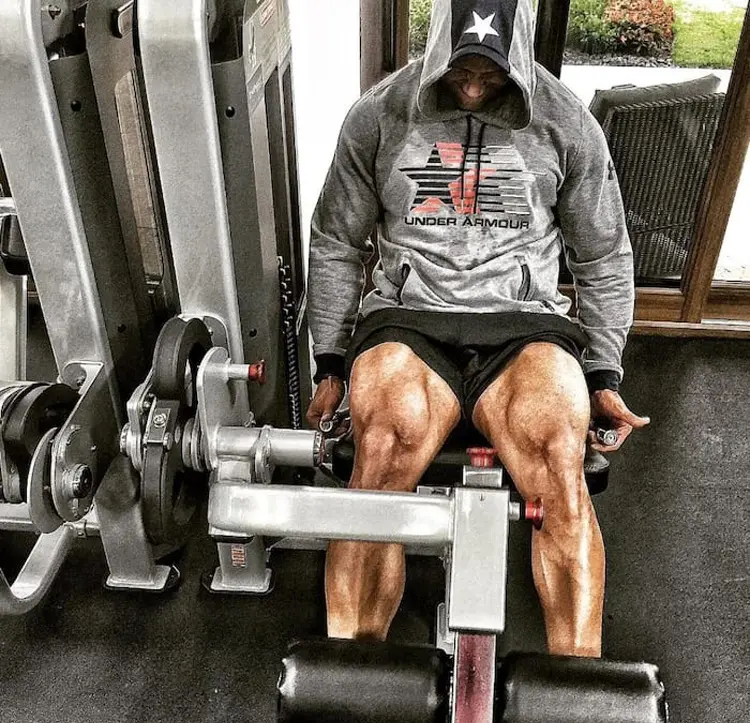
That means you may have to fend off other gym users who want to chat with you between exercises, and that could appear rude. Wearing headphones can help ward off unwanted conversations. Also, if you are the sort of person who likes to stop and talk between exercises, you may find supersets less enjoyable.
Supersets – Wrapping Up
You can use supersets to achieve almost any training goal, and usually while saving time in the process. Most workouts involve more recovery time than they do exercise, and supersetting means you can make much better use of your gym time, potentially halving the length of your workout.
Unlike many training systems that are designed just to make your workouts harder, supersets don’t always increase exercise intensity. That means you can use them all the time if you so wish.
With so many different supersetting variations to try, you should have no problem finding the perfect method for your training goals!

